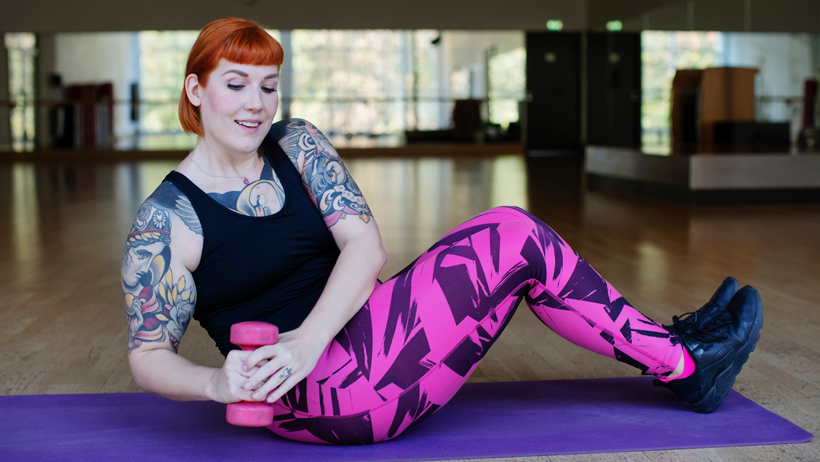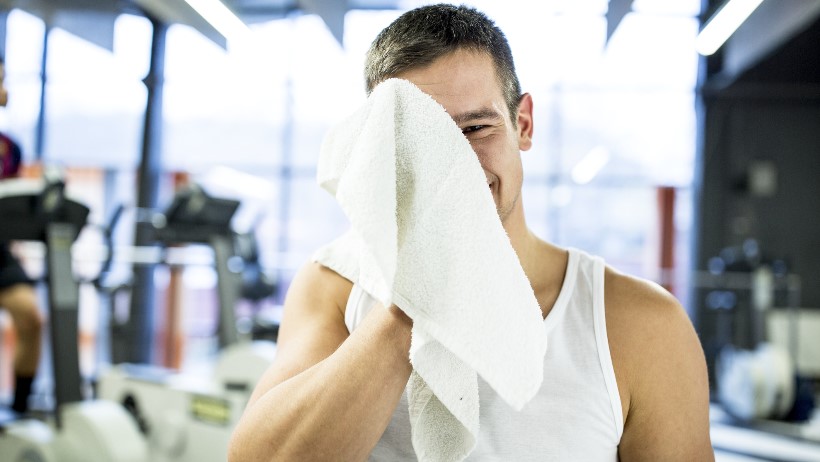Everyone has different fitness goals, but workouts so often appear to the be the same. Your workout should look different depending on if you want to lose weight, gain strength or gain muscle. And what seems like it should be fairly simple can be exceedingly complicated based on body composition, the sports you play, general activity level … I will make it simple today, and if you have more questions, please send me a note at ronkrit@juf.org.
First, a brief index of terms:
Reps: (repetitions): One complete movement of an exercise. (e.g. "I bench pressed 305 for one rep, bro!")
Sets: A group of repetitions. (e.g. "I did 3 sets of bench press and then headed to the beach.")
Rest: The break between each set. ("Before I can do another set of bench presses, I need to rest.")
Dropping LBs
I'm starting with the most popular request I get: "Give me a program where I can lose weight."
The most important thing about losing weight has nothing to do with exercise: you have to eat healthy and the right portions. For this article, let's assume you're doing that.
In the gym, you have to do cardio and hit the weights. The easiest workout is a full body circuit. You go from one exercise to the next with little rest between movements and mixing in cardio along the way. Your repetitions of each movement are between 10-20, that way you are getting a lot of blood flow to the muscle and keeping your heart rate on the higher end.
Here's an example workout program. You should do the entire routine 2-4 times:
- Dumbbell Rows
- Lunges
- Pushups
- Deadlifts
- Overhead triceps extensions
- Squat and curl
- Plank on forearms and toes
- Bike hard for 30 seconds
This is an efficient workout because you only rest at the very end, so you burn a lot of calories, which helps with weight loss, and you hit the entire body. This workout can be done three times a week; if you go over that, it might not allow enough time for your muscles to heal. On the off days, add in 2-3 days of cardio. I would do one day of steady-state cardio for 30-60 minutes, like walking or biking at a light pace.
Interval training twice a week will help burn a LOT of calories. Interval training involves working hard to raise your heart rate with a lot of intensity followed by a period with light intensity. I often do this by riding a stationary bike hard for 30 seconds and then recovering at an easier pace for 30 seconds for 20-30 minutes. Most spin classes operate like this. If you are ambitious, research fat zone and HIIT (high-intensity interval training) workouts.
Gaining Muscle
There is a plethora of theories on gaining muscle, known formally as muscle hypertrophy. When I first started as a trainer, the gold standard was 3-4 sets of an exercise with 8-12 reps per set and resting 2-3 minutes between sets. Additionally, you want to do 2-4 exercises per muscle group. Body builders often do higher reps because they want to pump as much blood into the muscle as possible, but in general I would stick with 8-12 reps.
A warmup should be done prior to workouts as well to ensure the muscles, tendons and joints are ready to work. This can be as simple as doing the movement with extremely light weight or a short yoga routine. Here is a sample chest and back routine, you can do 1-2 times a week, (find demos online):
Chest:
- Dumbbell chest press
- Incline chest press
- Cable crossover fly
- One set of pushups until failure
Back:
- Chin-ups/Assisted Chin ups
- Dumbbell low rows
- Lat pull down machine
- Cable rows
A common week would have this workout followed by legs, then another day of arms and shoulders and then off a day to rest.
While trying to gain muscle, you need to be in a caloric surplus, which means you can eat more calories than you burn. This is the fun part.
Strength Gains
When you first start lifting weights, you get stronger. Doing either of the workouts listed above, you will have strength gains. However, there is a specific way to train to get stronger. These types of workouts are popular for football players, track athletes, and power lifters. They use low-level reps (4-6) but often many sets (4-8). Since you are using heavy weight, you really need to make sure you are resting 3-5 minutes between each set. These workouts usually have fewer exercises as you focus on large muscle groups such as chest, back and legs only.
In addition to your muscles having to handle large loads, this really taxes connective tissue (joints, tendons, ligaments), which is why this workout is not for everyone. If you are looking to get really strong, do your research and think about hiring a coach with powerlifting experience. The exercises are simple, but you really need to focus on form, especially when you are trying to push significant loads. The big exercises people focus in on are: squats, deadlifts, bench and cleans.
Putting it Together
Depending on your goals, tweaking your workout can help. If you are not seeing results, try a different approach; I mix up my routine every 4-6 weeks. Again, it's worth reiterating that how you are fueling your body will make the biggest difference. You can figure out an estimate of how many calories you burn with the help of Google, and then use an app like MyFitnessPal to track how many calories you are taking in. Once you know those two numbers adjust your diet and/or fitness routine to achieve your goal.


.jpg?n=6071)

.jpg)





.jpg)



